Symphonium Helios - Classical Beauty
If you read this review, chances are you are passionate (and geeky) about IEM and personal audio in general. As a passionate enthusiast, at one time or another, it’s likely that you have the dream of making a great IEM that embodies your ideal sound so that the world can hear it. Whilst that dream remains a dream for many (including me), some of the geekiest and the most passionate members actually crossed the chasm and made their ideal sound a reality. Previously, we looked at tgx78’s Serratus and RikudouGoku’s Grand Alter Saber 2. Today, we look at Helios, the result of a collaboration between two boutique powerhouses from Singapore: Symphonium and Subtonic.
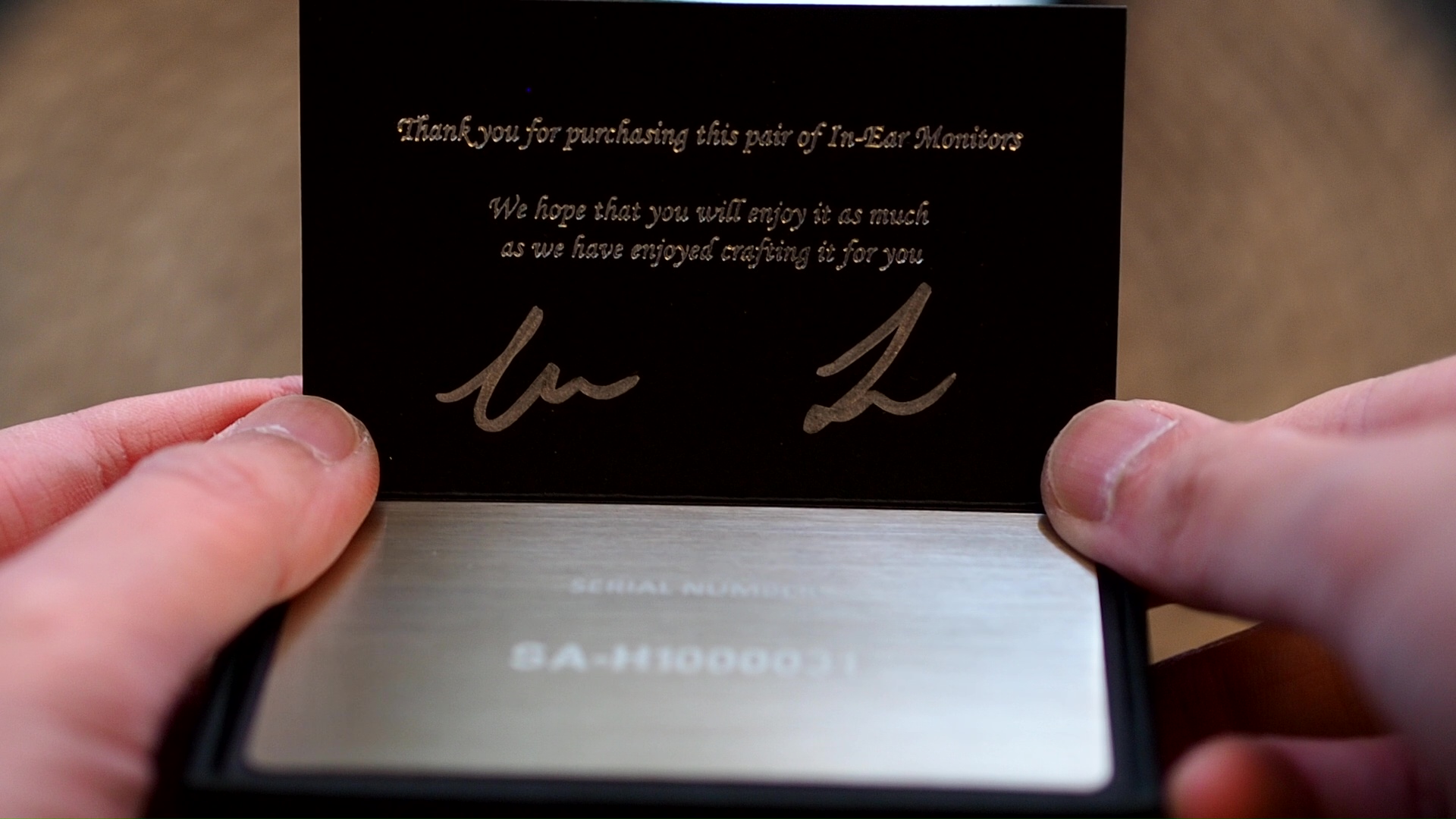
Forewords
- What I look for in an IEM is immersion. I want to feel the orchestra around me, track individual instruments, and hear all of their textures and details. I’m not picky about tonality, as long as it does not get in the way of immersion.
- I rate IEMs within with a consistent scale from 1 (poor) to 3 (Adequate) to 5 (outstanding). Ratings are assigned by A/B tests against benchmark IEMs, regardless of the retail price.
- Ranking list and measurement database are on my IEM review blog.
- Terms used in my reviews are consistent with the glossary by Headphonesty
- This review is possible thanks to the Australian tour arranged by @Sebastien Chiu and @Damz87 (Thank you!). I have no affiliation with or financial interest in Symphonium. The unit retails for $1100 at the time this review was published.
Sources for listening tests:
- iBasso DX300 (for all A/B tests)
- FiiO K7
- Hidizs XO
Local FLAC files ripped from CDs or bought from Qobuz were used for most casual listening and A/B tests. My playlist for A/B tests can be found on Apple Music here.
All of my listening was done with the stock Azla Sedna Earfit Standard tips. I listen at a medium volume. I usually turn up the volume until the midrange is fully audible and detailed, unless a treble peak or overwhelming bass prevents me from doing so.
Specs
- Driver: 4BA drivers, 4-way crossover
- Connector Type: 2-pin
- Impedance: 8.5Ohms@1kHz
- Sensitivity: 104dB/Vrms@1kHz (83.3dB/mW@1kHz)
Build and Accessories

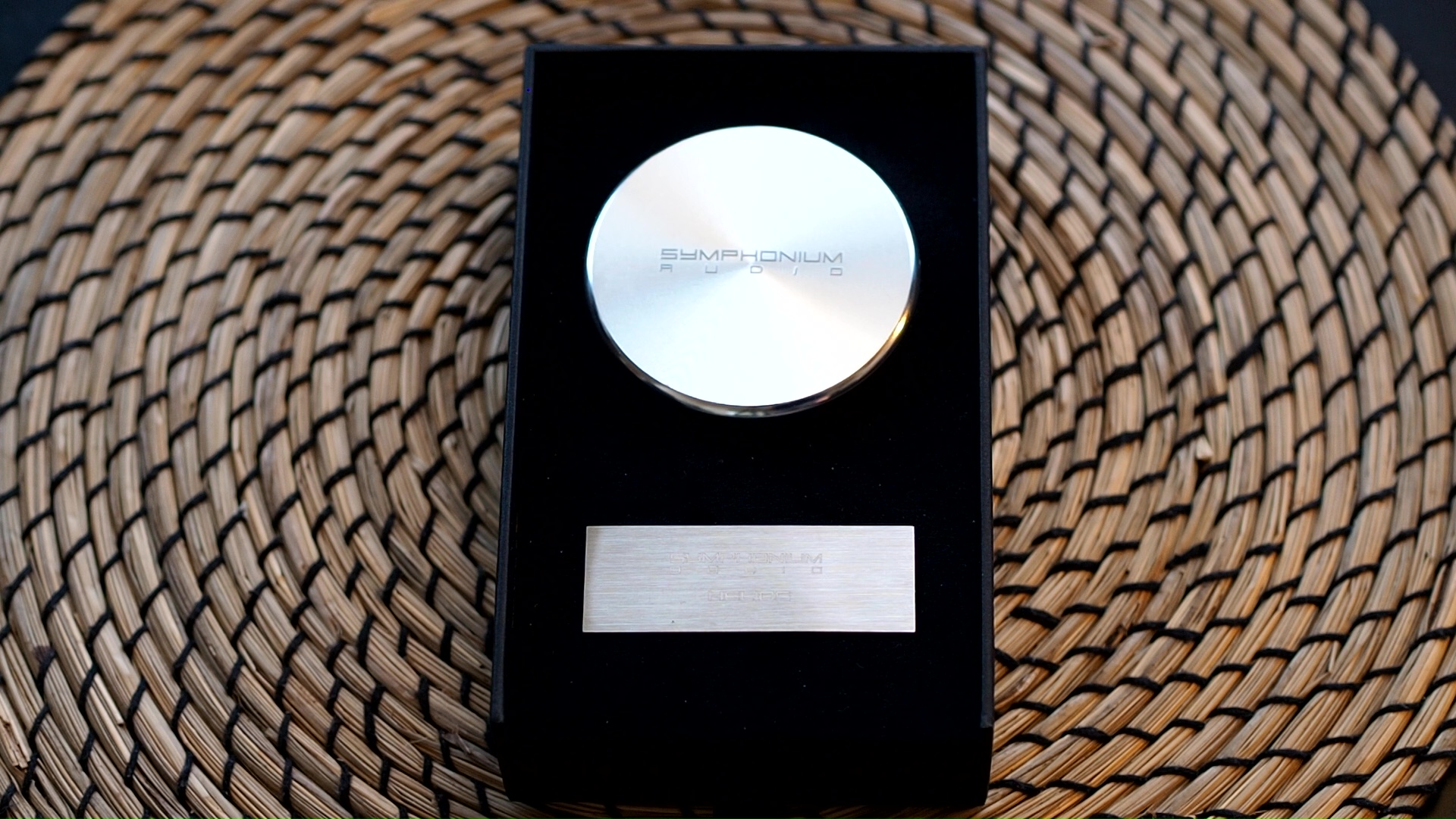


My first impression of Helios was the size of the box: it’s simple and tiny. Upon opening the box, I was surprised once more: the metal carrying case of Helios is also tiny next to leather round cases that usually come with IEMs from 64 Audio, Fir Audio. The tiny box and carrying case stood in stark contrast against the huge earpieces.
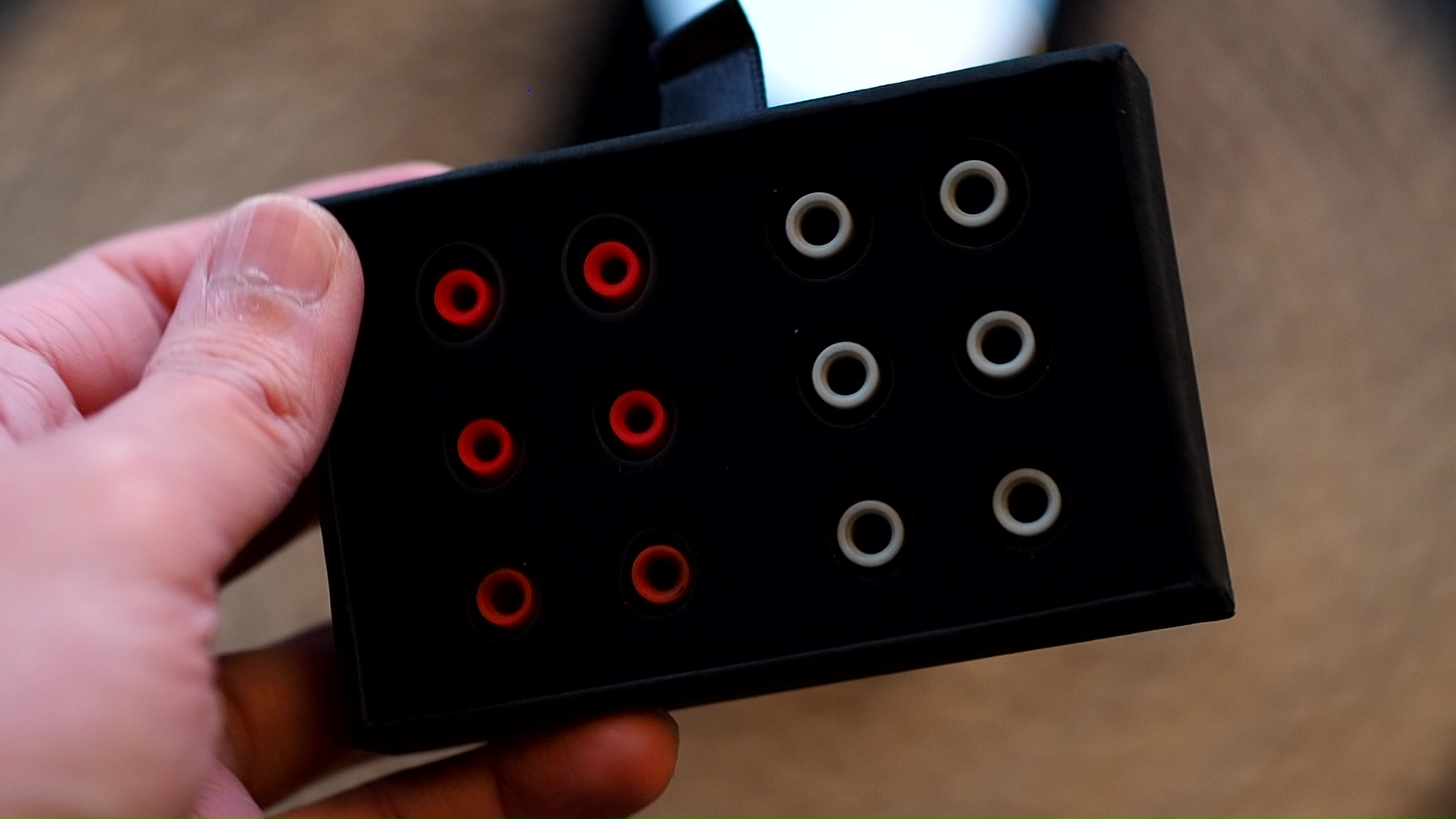
Before moving on to the earpiece, let’s talk about the rest of the accessories. Helios came with a cable that deliberately does not have any ear hook to help you wear the IEM more easily. At the bottom of the box, you will find a drawer that contains two types of ear tips and a “thank you” note with signatures from folks at Symphonium. I find this card to be a nice touch.
With accessories out of the way, let’s talk about the elephant in the room: the earpieces.

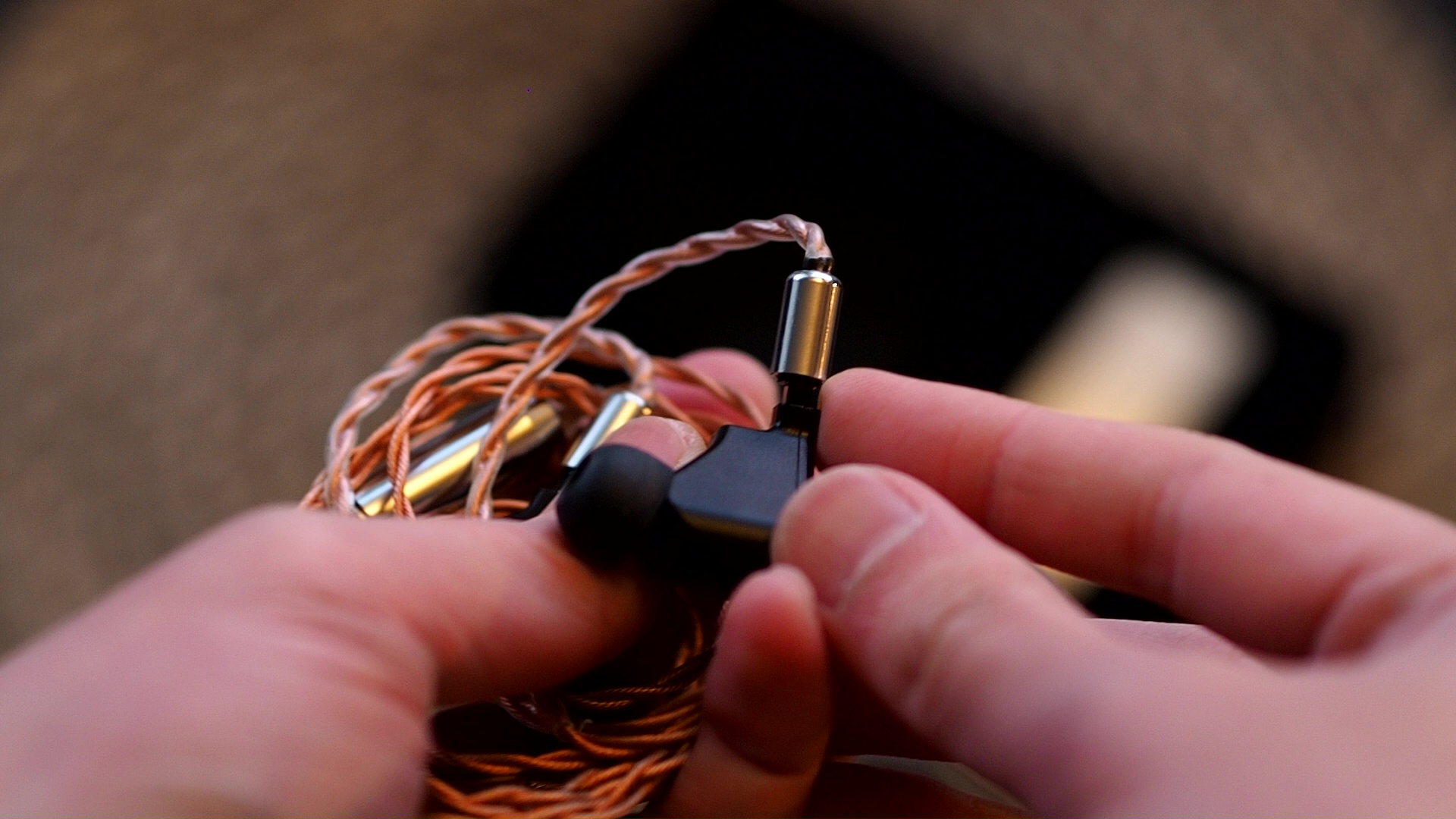
I’ll not sugarcoat it: Helios is a difficult-to-wear IEM. It’s not the sheer size of the earpieces that are troublesome, because the earpieces usually “float” outside rather than resting on the conchas of my ears.
No, most of the challenge of Helios comes from the thick and long nozzles. So long that I can wear the IEM at not one, not two, but three different insertion depths, which result in three distinct presentations.
How to wear
The manufacturer-approved way or wearing Helios is deep-fitting. By deep, I mean Etymotic-like deep, with the nozzles going pass the first bend and the shells sit against the conchas of your ears. This configuration showcases the oft-cited treble extension and clarity of Helios in all of their glory. Great treble extension means tack-sharp imaging, strong sense of layering of instruments from closer to further away, and excellent sense of space due to how clear the reverberation of the recording venue comes across. This configuration also gives an extreme level of noise isolation, similarly to wearing an Etymotic IEM. There are but two drawbacks: soundstage feels narrow (less left-to-right extension), and this fit can be very uncomfortable.
At the other end of the spectrum, you can opt for a shallow fit by using larger tips. In this configuration, the eartips create a seal with the opening of my ear canals, meaning the nozzles of Helios barely enter my ear canals. This configuration gives me the widest soundstage and the most comfort. However, it introduces peaks and harshness to the treble region, which seem to impede my perception of upper treble. I find the sonic quality to have a noticeable downgrade.
My chosen way or wearing Helios is medium-deep fit. It means I used a medium ear tips and twist the IEM into place, similarly to Symphonium’s instruction. However, I stop when the nozzles reach the first bend. This configuration gives me the median between the two extremes mentioned above in terms of sonic quality, the width of the soundstage, comfort, and noise isolation. The rest of this review is based on this fit.
Tonality
Frequency response of Helios against Variations and the Harman in-ear target. Measurements were done with an IEC-711-compliant coupler and might only be compared with other measurements from this same coupler. Visit my graph database for more comparisons.
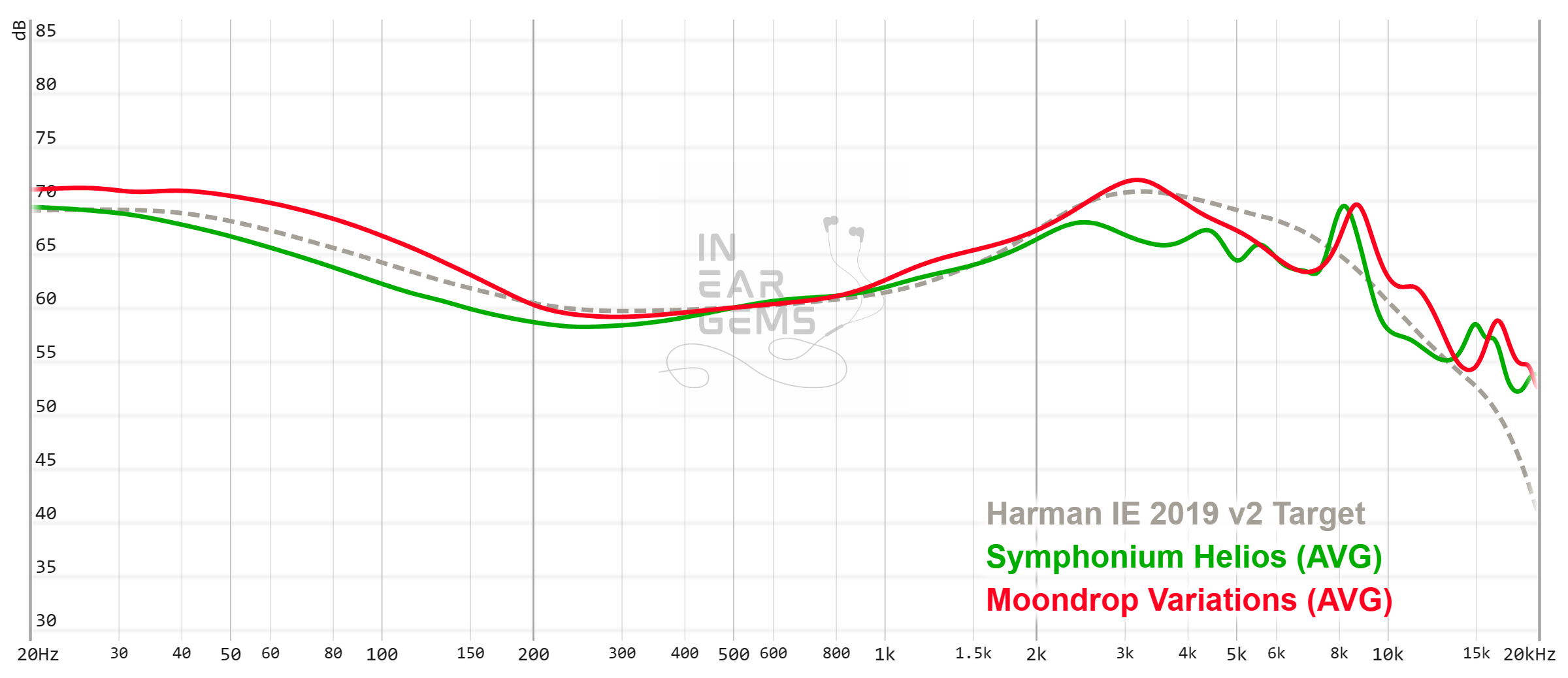
It is helpful to think of an IEM as a filter that highlights or subdues different parts of the incoming audio signal. This effect can be measured objectively by the squiggly lines above, called Frequency Response (FR) graphs, which measure how loud an IEM is at different frequencies from 20Hz (bass) to 20kHz (upper treble). Subjectivity is how your ears and brain interpret the effect of that filter on your music and decide whether it is “enjoyable.” There are some “rules of thumb” when it comes to tonality, but most interesting IEMs usually bend the rules masterfully.
One of my favourite ways of looking at an IEM is to compare the vision of its creators with the end result to see if their lofty ideas can be translated to the reality. Symphonium envisioned the Helios to have “an exceptionally clean sub-bass punch that hits hard, without coloring the clarity of vocal presentations,” and “a smooth and detailed midrange” with “class-leading treble extension.” You can also find out more about the idea behind Helios from an interview with Toranku and Ken from Subtonic and the details about Toranku’s frequency response target.
So, how does Helios sound?
I would say it matches the vision precisely. The tonality of Helios can be summarised as “U-shaped”. It means:
The midrange is neutral or “flat.” In other words, Helios aims to disappear from the music instead of imposing an opinion on how the music should sound. It means that Helios presents instruments and vocals as-is rather than injecting additional warmth to make them more mellow and enjoyable. At the same time, Helios does not boost the upper midrange to the degree of other “neutral” IEMs like Moondrop Blessing 2 or Etymotic ER2SE. As a result, female vocals are not overly forward or “shouty”.
Is neutral tuning always good? Logically, an IEM that presents music without any colouring is ideal (a.k.a., “as artist intended”). Subjectively, the value of a neutral tuning depends a great deal on your preference and even your mood. I personally prefer IEMs to have very little colouring to maximise their compatibility with different music libraries and source chains.
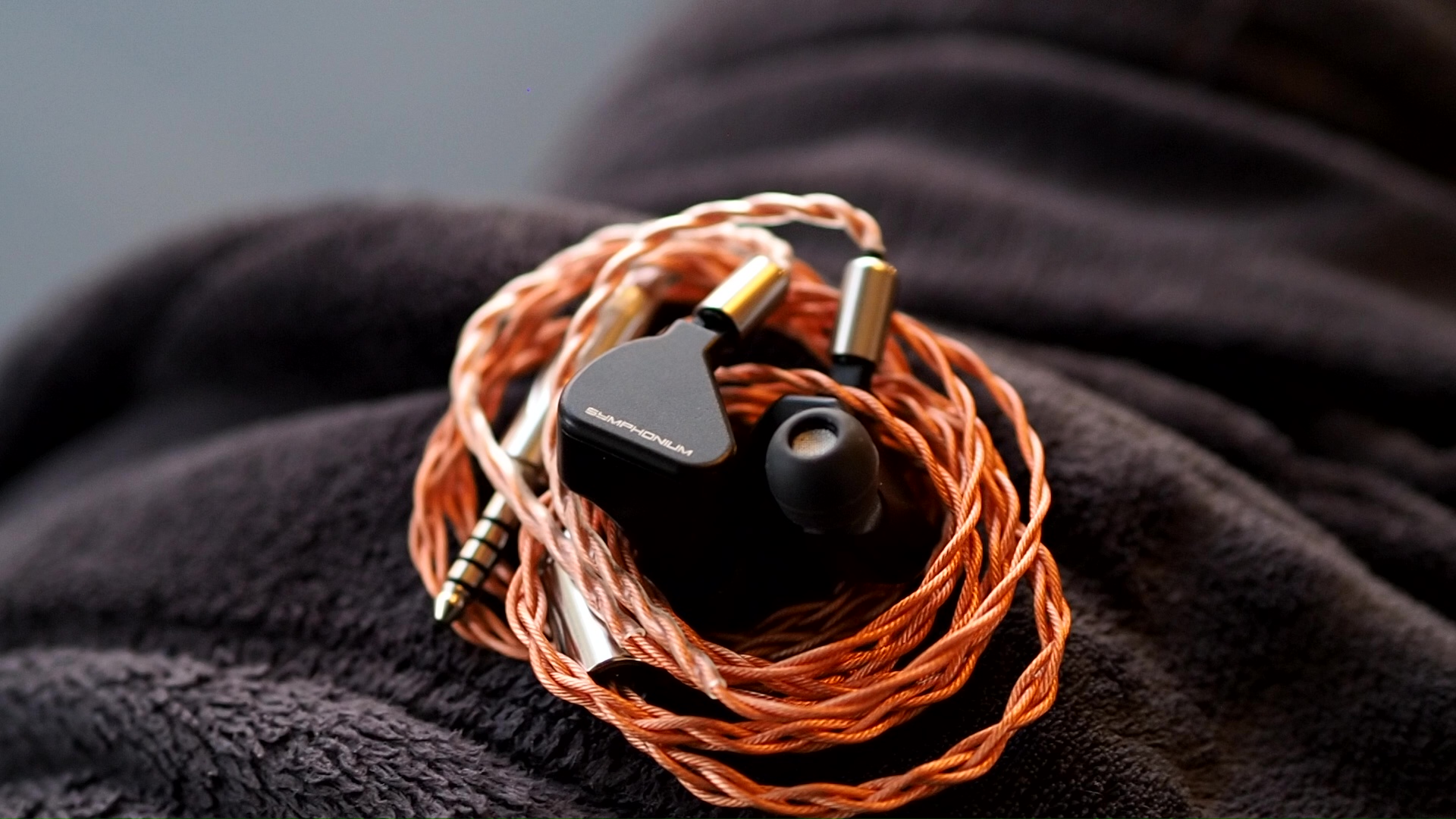
The treble of Helios is carefully boosted. Much of the treble energy of Helios are focused in the upper treble region which plays a significant role in creating the so-called “technical performance” that I always look for when trying an IEM. Emphasis in upper treble allows Helios to create ambience embedded within recordings. For example, when I listen to “Bach’s Violin Sonata No.1 in G Minor: Presto” by Kavakos, I can easily hear the reverb of the violin within the recording venue, which improves the sense of space and the illusion of “being there.”
The mid-treble (body of cymbals and hats) is present but not overly emphasised. It means I can discern cymbals, hats, and chimes without much effort, but these instruments do not become too loud or piercing. Helios also does a good job at reproducing textures and nuances of these instruments.
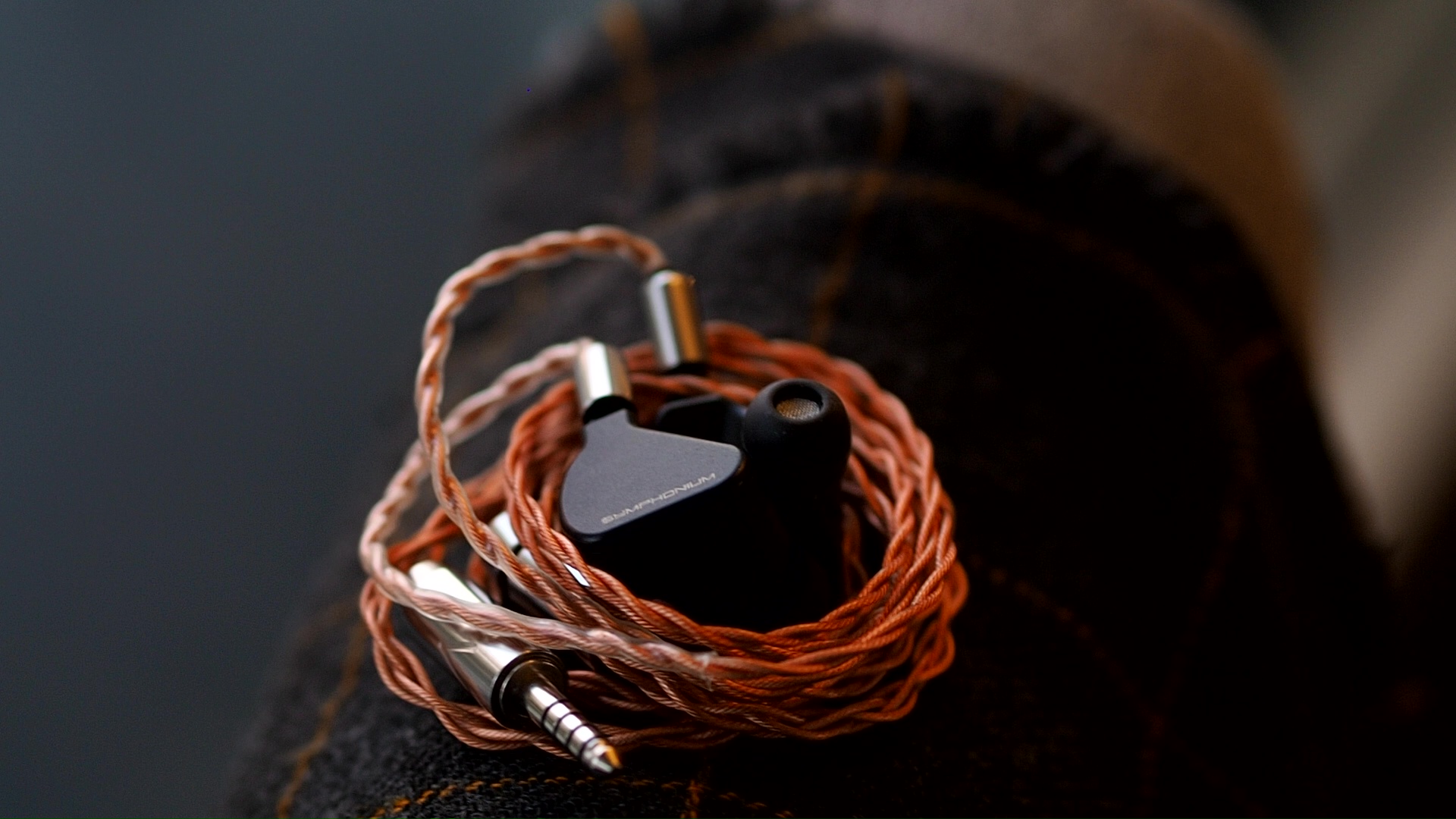
The lower-treble or “presence” region is slightly subdued to control the harshness and avoid masking the upper treble. This tuning approach generally works. I did not find any harshness or sibilance despite the brighter tuning of Helios.
It should be emphasised that all of the treble niceties described above require a medium-deep fit. The treble would be harsh and not very detailed if you wear Helios with a shallow fit.
Let’s switch our attention to the bass region of Helios next.
Bass and Dynamic
A good pair of IEMs/earbuds/headphones should be able to convey, even emphasise, the sense of rhythm and the ebbs and flows of music. In general, this energy requires IEMs to be able to convey rapid volume swings on the downbeat of an orchestra or the leading edge of bass note. It also requires tactile physical sensation of the bass, and the sense of rumble and texture accompanying the bass drops. An IEM can have loud bass, but still fail to convey energy should it lack other features above.
The bass of Helios is interesting in many ways.
The bass tuning of Helios can be described as “sub-bass emphasis.” It means that Helios can produce a sense of physicality and tactility. You can feel the pressure of kickdrums and electronic bass. This physical sensation makes listening to Helios fun.
However, Symphonium and Subtonic decided to cut the mid-bass region of Helios in order to avoid the bass from colouring the midrange. It means that you can feel the bass but sometimes, you cannot quite hear the bass. This tuning creates an inconsistency in terms of how Helios reproduces bass. If a track is mixed with a lot of sub-bass, you would find that Helios is a bassy IEM. However, if a track focuses on mid-bass, you would find Helios thin, light, and somewhat hollow in the bass.
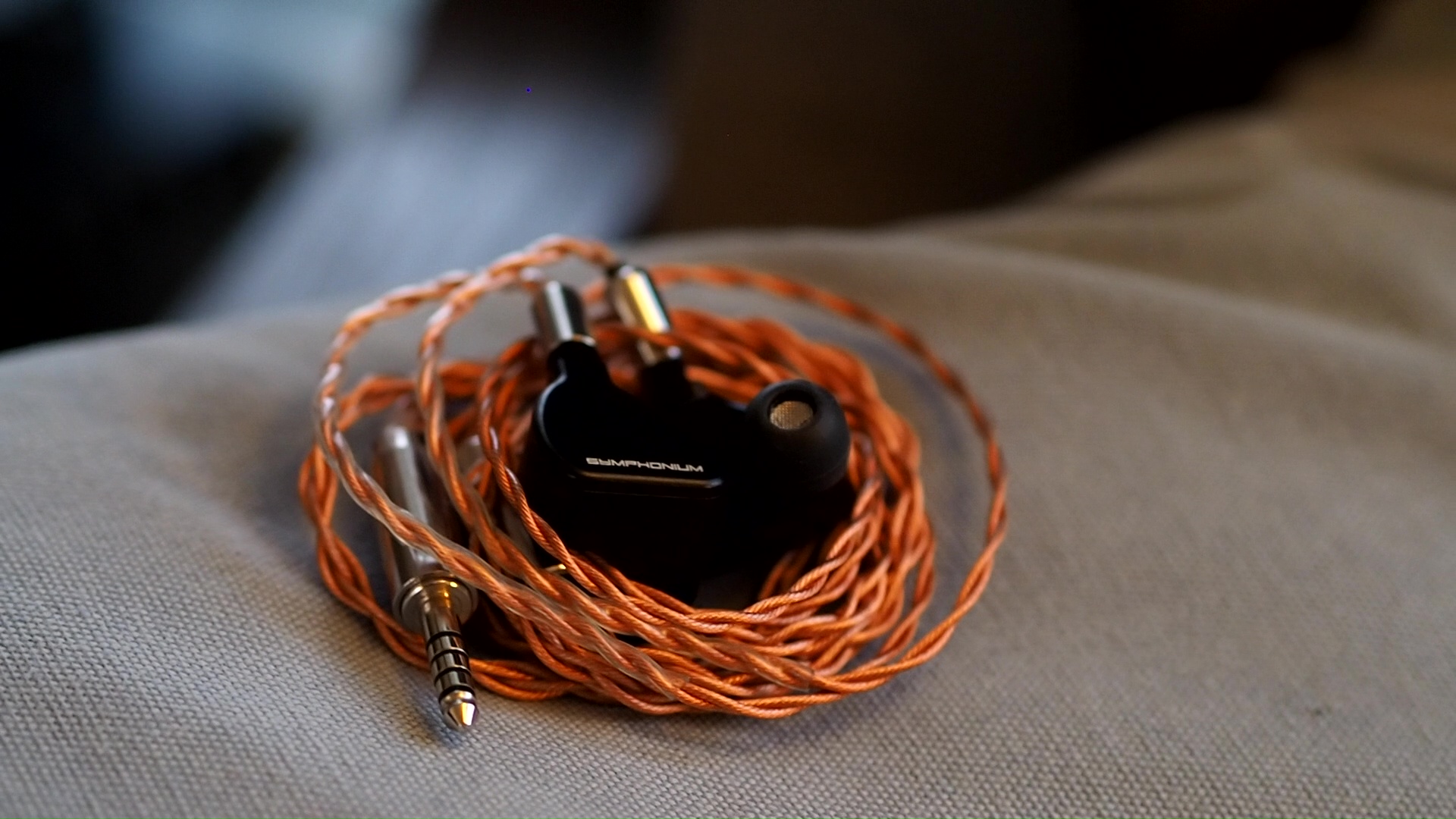
On the plus side, Helios is very adept at reproducing transients: the rapid swings in loudness in music, generally at the beginning of bass notes or downbeat or an orchestra. For example, when I listen to “Let the Battles Begin!” by Square Enix Music & Nobuo Uematsu, I felt a clear sense of marching rhythm thanks to how “snappy” the Helios is. It should be emphasised that having large bass does not necessarily translate to great transient response. It’s quite common to find big but woolly bass even from IEMs with a sub-bass emphasis tuning.
Soundstage Imaging

Stereo imaging or “soundstage” is a psychoacoustic illusion that different recording elements appear at various locations inside and around your head. Your brain creates based on the cues in the recording, which are enhanced or diminushed by your IEMs, your DAC, and your amplifier. Some IEMs present a wide but flat soundstage. Some present a “3D” soundstage with layering, depth, and height. In rare cases, with some specific songs, some IEMs can trick you into thinking that the sound comes from the environment (a.k.a., “holographic”)
When you use a shallow or medium-deep fit, you would find Helios to have an unusually wide soundstage. It means that the louder instruments and voices that are placed at the center of the stage would be pulled away, slightly outside your ears and your head. If you opt for a deep fit, then this advantage would disappear and Helios would have a stage width of a normal IEM.
The depth of the soundstage of Helios is good, but not as unusual as the width of the stage. I can hear a clear contrast between closer and further away elements of a mix when they play at the same time. There is also a strong separation between the highlighted elements at the center of the stage and the background, such as audience cheers or reverbs. However, Helios does not produce a strong illusion that the sound coming from the front of the head.
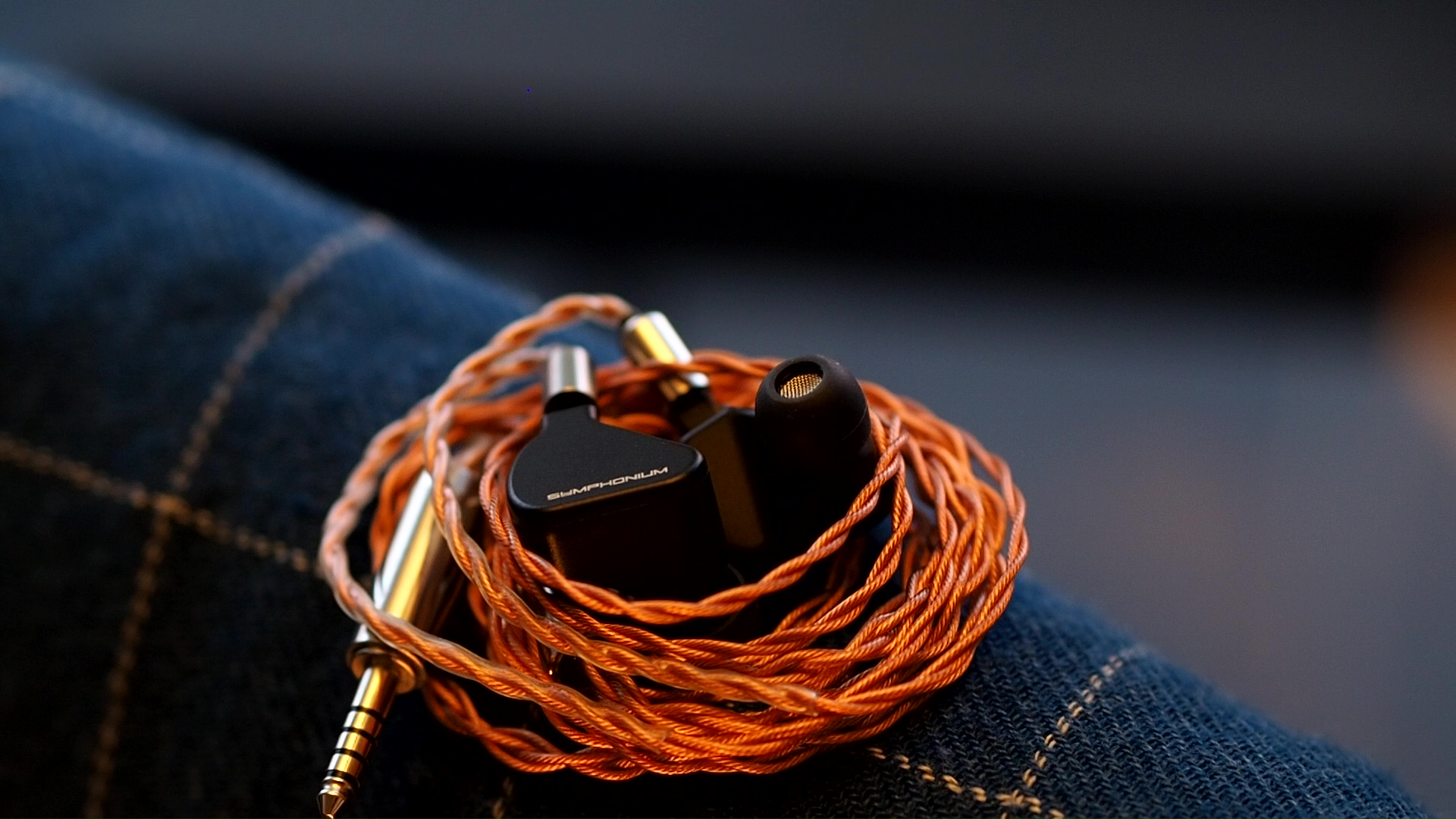
The precision of the instrument placement of Helios is excellent. A good way to think about the imaging of Helios is to think of a camera that focuses properly. Every element of a mix is placed at a precise and stable position with clear boundary, making it easy to track it. Things were more challenging when instruments and vocals are placed at the same position on the stage. Helios can produce a decent sense of layering, preventing them from mushing against each other, to a certain degree.
Soundstage imaging with games (CS GO Gameplay by Throneful) The pinpoint accuracy of Helios translates to gaming. It is easy to pin point both the direction and distance of the sound. If you have the skill, you would be able to take advantage of this ability.
Resolution

Resolution is a fascinating subject due to the difficulty of pinning down what it really is. To me, “resolution” can be broken down into three components: (1) Sharpness, incisiveness, or “definition” of note attacks (see the figure above). (2) The separation of instruments and vocals, especially when they overlap on the soundstage. (3) The texture and details in the decay side of the notes. The first two give music clarity and make it easy to track individual elements of a mix. The last provides music details and nuances. Smooth and well extended treble response plays a crucial role.
Thanks to the snappy transient response and pin point imaging, Helios has excellent clarity and definition. Every instruments and vocals have clear boundaries. Percussive notes start cleanly with crisp attack. So on and so forth. The only time when Helios stumbles is when instruments and vocals overlap each other. This problem indicates some limitations on the “true” resolution of Helios and where Symphonium can improve.
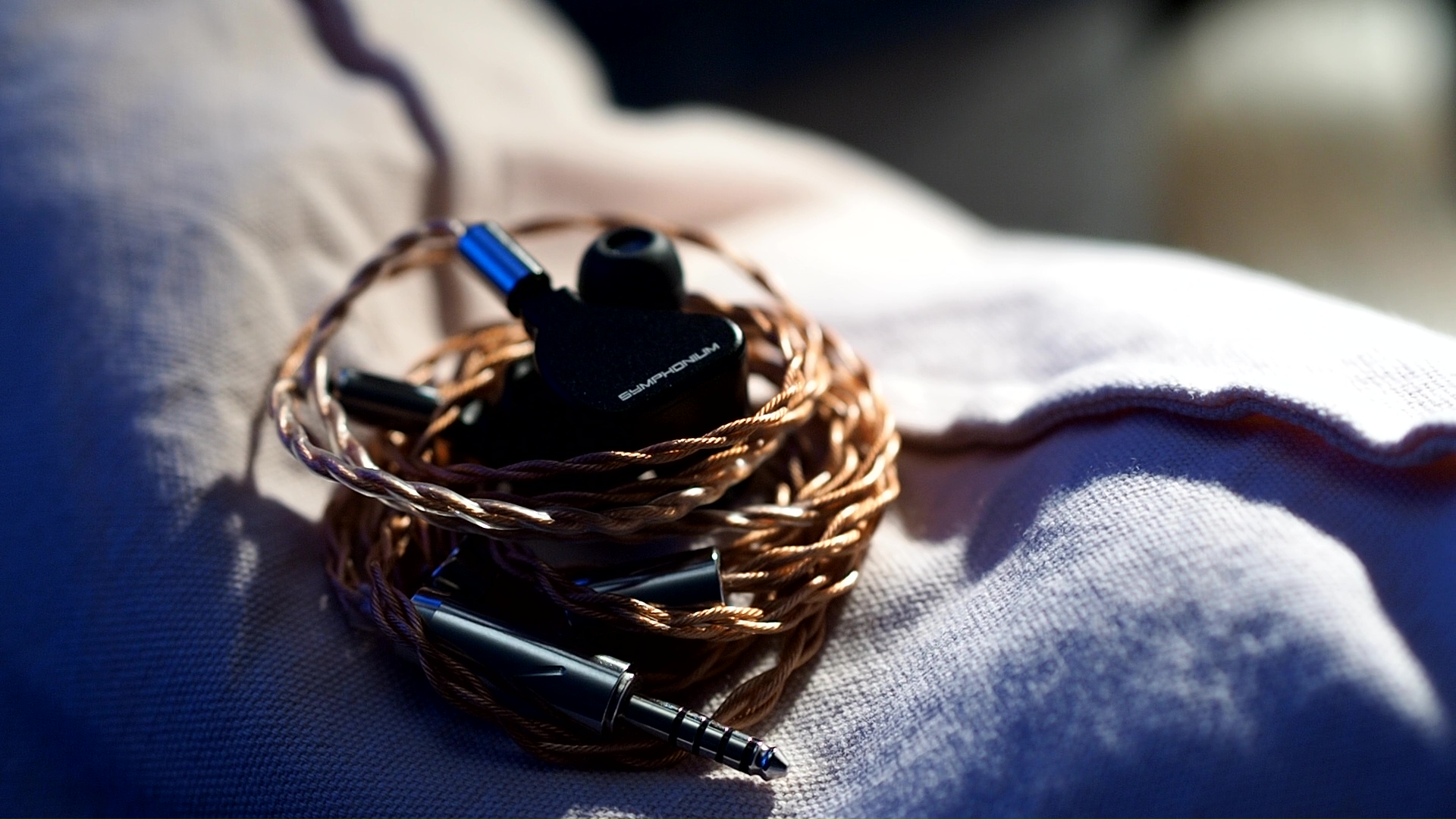
Another area where Helios is simply good, not great, is micro detail. The best way to discern and highlight the difference between micro details of IEM is by listening to sparse but detail-rich recordings like “Bach’s Violin Sonata No.1 in G Minor: Presto” by Kavakos and the texture and nuances around the violin notes. IEMs with stronger midrange resolution can preproduce more information down to sound of the bow gripping the strings. Helios has a dry, even rough, texture in the way it presents the midrange, so it does not feel overly smoothened, but it does not resolve down to the level of some stronger performers.
Does it matter?
It depends. Those little bits nuances and details would appear everywhere across a complex recording, making the music richer and more vibrant in detail. It is particularly interesting when you do nothing but listening to a recording closely. But for certain genres and listening situation, I would say Helios is “enough.”
Source Pairing

Helios is difficult to drive.
Similarly to Final Audio E5000, Helios has an annoying combination of low sensitivity and low impedance, meaning portable amp likely run into current issues. In fact, I managed to shrink the soundstage and reduce the dynamic of Helios, even in the shallow fit position, using a tiny DAP and the BTR5. I recommend using balanced output from the most competent dongle in your collection. If you have a desktop amplifier or a battery power amplifier like Topping NX7/G5, use them to get the most out of Helios.
Comparisons
Moondrop Blessing 2:
- The tonality of Blessing 2 feels more “V-shaped” comparing to Helios
- The violin sound of Blessing 2 feels more smoothened. It has less crunch and texture than Helios
- The reverb trail of Blessing 2 is less defined.
- The separation between the violin and the reverb at the background is not very strong. Everything feels more meshed together.
- Helios has stronger definition and separation of voices. For instance, the female voice on the right side of the stage in Jolene (feat. dolly Parton)” by Pentatonix is crystal clear and easy to follow without effort with Helios, but harder with Blessing 2
- Each voice also has more nuances and micro details with Helios comparing to B2
CFA Andromeda 2020:
- Andromeda has much more lower midrange, so at a glance, Helios seems more separated. However, close inspection found that all voices are equally well defined and easily followed with both IEM.
- The violin sounds richer and denser on Andromeda, but with equal level or slightly less textured and nuanced.
- The reverb trail of Andromeda is similarly defined and easy to discern.
- The reverb of Andromeda forms an arc or dome around the head. Helios feels more like listening to a two channel system.
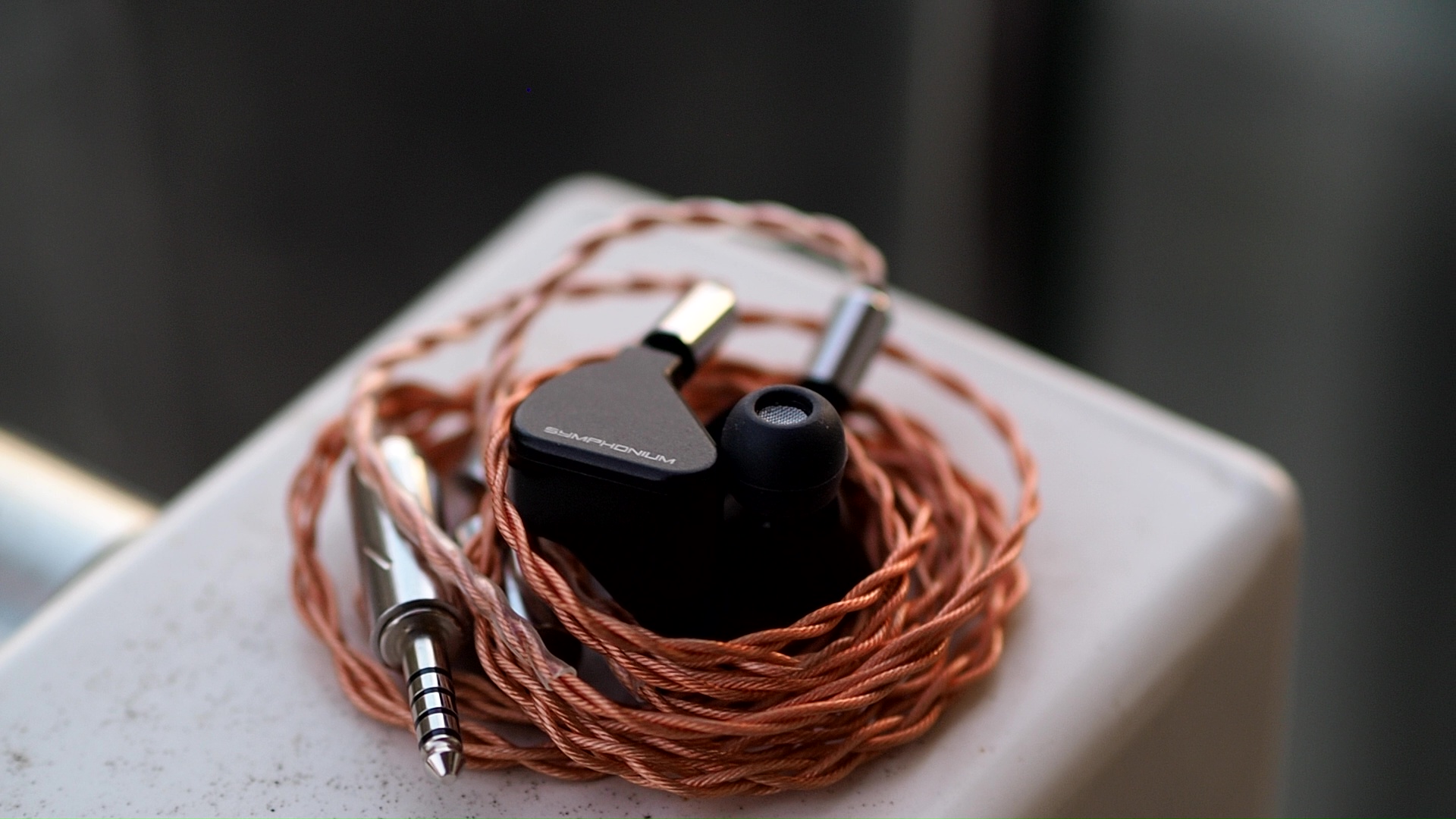
64 Audio U12T:
- The tonality feels more “U” with U12T: thicker lower string, and very high notes are more highlighted.
- The kick drum is noticeably louder on U12T
- The cymbals are noticeable louder on U12T
- U12T presentation feels warmer and denser, like more “things” happening in the space between instruments and instruments have more body.
- The violin sounds richer and denser with U12T, and at the same time equally or to slightly more textured and nuanced.
- The reverb trail is the most defined.
- The reverb forms an arc or dome around the head with the violin sitting in front, in the middle of the stage. Helios presents like a two channel system.
- Helios has similar separation with U12t, even though the thinner midrange of Helios might make it seems like there is more space between instruments.
Symphonium Meteor:
- Kick is noticeably louder on meteor
- The overall presentation and tonality is thicker and warmer, like instruments and vocals have more weight
- The depth of the stage is on Meteor side
- The width of the stage is on Helios side
- The definition of instruments and vocals are crisper and cleaner on Helios side. The cheers of the audience, for example, is more clearly defined with Helios.
My Take
Symphonium Helios reminds me of the contrast between “Classical” and “Romantic” beauty described in one of my favourite books, Zen and Art of Motorcycle Maintenance by Robert Pirsig. The romantic beauty is about the surface aesthetic, about the feeling, about looking at a “thing” as a whole. The classical beauty is about the underlying form, the balance, how parts fit together to form the whole. Most audio gears are, of course, romantically beautiful. With Helios, however, I see the classical beauty in how it was optimised, from the choice of tuning to the constraint in terms of the number of drivers being utilised.
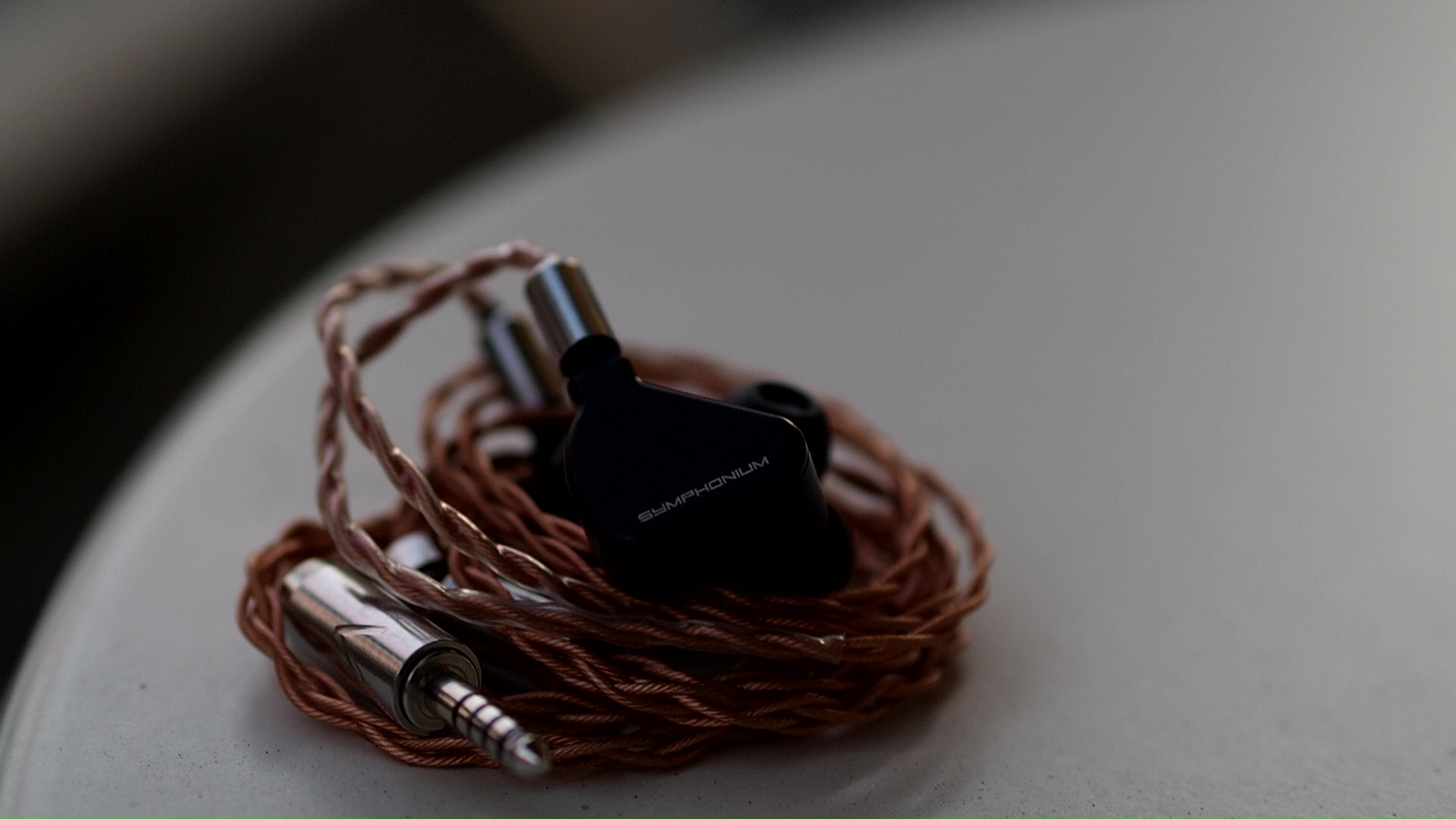
Is this IEM for everyone?
No. The fit is difficult, and the dip in the lower midrange and midbass might alienate listeners who wants some extra warmth and thickness to their vocals and instruments. But if you know that you are after a reference and clean sound and you don’t have much problem with fitting IEMs, Helios is worth consideration.
Absolute Sonic Quality Rating: 4/5 (Great)
Bias Score: 4.5/5 (I like this IEM)
Pros:
- Beautifully neutral tonality
- Extended treble
- Deep and tactile bass response
- Laser sharp note definition and imaging
Cons:
- Challenging fit
- Midbass dip
- Doesn’t quite match the resolution and soundstage of top performers of its era
- Modern $500-ish IEMs are catching up

